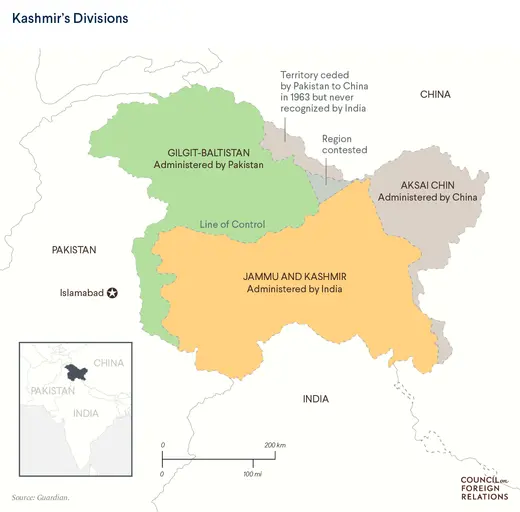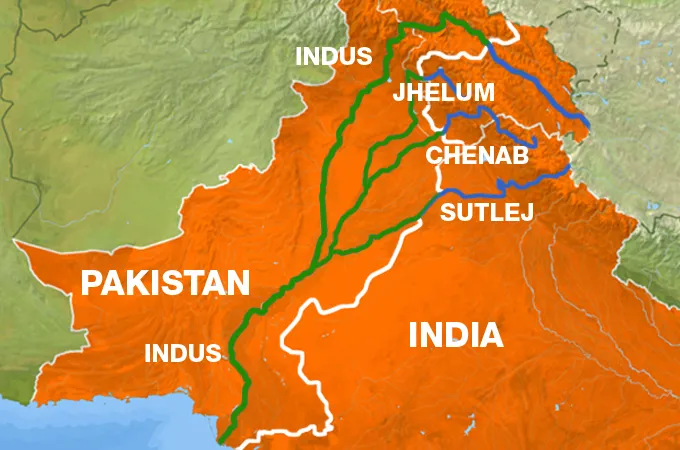India vs Pakistan explained
- Sebastian Palacios.

- May 7
- 3 min read
Updated: Jul 18
This week, India bombed nine militant sites within Pakistan and Pakistani-administered Kashmir region in the Himalayas, killing at least 26 people in the worst clash between the two countries in decades. This after Pakistani-backed separatists massacred 26 Hindu tourists in the Indian-controlled Kashmir region on April 22th.
India insists that Pakistan is to blame for the ongoing crisis in Kashmir. It accuses Pakistan of hosting, financing and training the Pakistan-based armed and separatist groups that have claimed responsibility for multiple attacks in India over the decades. On the other hand, Pakistan accuses India of denying the Muslim majority population of Kashmir the right to separate from the control of New Delhi. Both countries have cut diplomatic relations and India has also threatened to cut the flow of water to Pakistan that comes from the rivers that originate in its territory. Both countries have around 150 nuclear weapons.
The conflict between India and Pakistan dates back from the 1947 Partition of British India. The end of British colonial rule led to the creation of Muslim-majority Pakistan and Hindu-majority India, and allowed some regions like Kashmir to choose which country to accede to. Kashmir, a Muslim majority region, was expected to become part of Pakistan. However, its Hindu ruler, Hari Singh, wanted it to stay independent but, faced with an invasion by Muslim tribesmen from Pakistan, acceded to let India annex the region in return for help against the invaders. This triggered the Indo-Pakistani War of 1947-48, which ended with a cease-fire that divided Kashmir in two. Today, the Indian-administered Kashmir has a population of around 7 million, of whom nearly 70% are Muslim. Whereas Pakistan-administered Kashmir has around 4 million people, almost all of them Muslim.
Because of constant violations of the cease-fire by both sides, the tensions escalated to a full-blown war in 1965, without major changes at the end. Then, in 1971 India and Pakistan fought another war over East Pakistan, in which India helped the territory gain independence, resulting in the establishment of present-day Bangladesh.
The United Nations has recommended holding a plebiscite to settle the question of whether Kashmir should join India or Pakistan. However, the two countries could not agree to a deal to demilitarise the region before the referendum could take place. Until this day, no plebiscite has been held, which is a source of anger for Muslims in the area. Pakistan demands a referendum to decide the status of Kashmir, while India argues that, by voting in successive Indian state and national elections, Kashmiris have confirmed their accession to India, and that the so-called Simla peace agreement of 1972 binds the two countries to solve the problem on a state-to-state basis. India acquired nuclear weapons in the 70s, while Pakistan did in the 80s. After that, both countries fought brief but bloody conflicts in the Himalayan region.
A major change came in February 2019, when an attack on a convoy of Indian military forces in Indian-administered Kashmir killed at least forty soldiers. India retaliated with an airstrike targeting terrorist training camps within Pakistani territory, which was followed by Pakistani air strikes on Indian-administered Kashmir. The exchange escalated into an aerial engagement, during which Pakistan shot down two Indian military aircraft and captured an Indian pilot; the pilot was released two days later.
In August 2019, the Indian government of Modi revoked Article 370 of the Indian constitution that granted Kashmir’s special status, effectively diminishing their autonomy. The ruling not only angered Kashmiris but was also viewed as a “grave injustice” by Pakistan. The objective of Modi was to integrate Kashmir into India through a doctrine of Hindu nationalism. This resulted in violent clashes with the local Muslim population, and India-administered Kashmir remained under lockdown for over a year, with internet and phone services intermittently cut off, independent media shot-down and around 30,000 people detained. New rules were implemented that allowed outsiders to buy land in Kashmir for the first time, which many saw as an attempt to change the Muslim demography of the region.
After the US killed Bin Laden in Pakistan in 2011 and the US retreated from Afghanistan in 2021, China has become an increasing closer arms supplier to Pakistan, whereas India has become more dependent on the US. In that sense, this conflict is also reflecting the interests of the two most powerful countries in the world. India has for years blamed Pakistan for supporting, arming and training armed Muslim groups that seek independence in Kashmir. Whereas Pakistan has insisted that it provides only moral and diplomatic support to Kashmir’s secessionist movement.
















La nueva ola de enfrentamientos entre India y Pakistán, coincide causalmente con la reunión en enero de este año entre Modi y Trump y más recientemente el 22 de abril de este año la visita de Vans a la India en una clara disposición hindú de estrechar vínculos con USA y quizá con sus prácticas de terror y falsa bandera.
No me extraña que sea un falso positivo indio para de manera muy oportuna para USA, desencadenar acciones bélicas y desestabilizar la región, natural espacio vital chino.
De ser así, habría Modi desperdiciado la oportunidad de India de posicionarse positivamente en el tablero de ajedrez geopolítico, sucumbiendo más bien ante las propuestas indecentes gringas.
Amanecerá y veremos.......!!!
Saludos!!